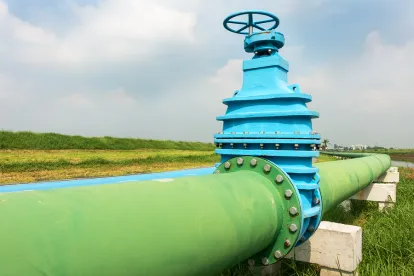On June 28, 2020, the U.S. Department of Energy (USDOE) released its publication titled, “The Appalachian Energy and Petrochemical Renaissance: An Examination of Economic Progress and Opportunities.” USDOE, along with seven other federal partners, offers a list of opportunities and challenges relevant to the region focusing on the states of Kentucky, Ohio, Pennsylvania and West Virginia. On July 5, 2020, Duke Energy and Dominion announced the cancellation of the Atlantic Coast Pipeline in Appalachia, illustrating USDOE’s point that without private sector investment a renaissance is not possible. The preface identifies ongoing action items designed to promote investment (EPA Clean Water Act reform to assist pipeline permitting, FERC/DOE LNG timely export authorizations, workforce training strategies, etc.), but the report offers no solution to the cost of protracted litigation that reflects disagreement about what a renaissance should look like. Using words like abundance, progress, and accelerate, this report offers a positive tone for opportunity during these lackluster days. The preface also characterizes COVID-19 impacts as a setback for Appalachia. As the report describes, certain Appalachian counties and states possess an economic and geographic barrier that has limited private sector investment. Although not specifically noted by USDOE, these attributes also have limited early spread of the infectious disease, a demonstrable strength protecting its workforce. COVID-19, however, illustrates public health data that is also an indicator of the tangible isolation of Appalachian people.
The report emphasizes Appalachia’s strengths, labeling the opportunity as a “trifecta of potential growth in energy, petrochemical, and manufacturing.” The 75-page/93 footnote narrative expounds on work by government to facilitate realization of the opportunity, with a prevailing undertow emphasizing that investment by the private sector will be required to realize the promise of a renaissance.
Energy for the Appalachian region is described as a remarkable supply of oil and natural gas. This report is filled with useful Energy Information Administration graphics and data. By 2050, Eastern natural gas production will make up more than 45 percent of U.S. production. It suggests export, streamlined permitting, infrastructure builds (roads, pipelines, rail, waterways and broadband) and new technology (coal R&D and advanced manufacturing) will all serve to grow the business of coal and natural gas in the region. The report notes rare earth elements from coal as a yet-to-be-realized candidate for future investment.
Reference to Shell and PTT gives USDOE a couple of petrochemical development examples of private sector investment impacting neighboring states and the opportunity to speak of new construction and on-site jobs to the region. Citing to problems in gaining private investment in a regional petrochemical industry, USDOE raises workforce, topography, and infrastructure as challenges to overcome in order to achieve a renaissance for Appalachia.
Manufacturing in Appalachia is reported as needing modernized. The report speaks to work by the Small Business Administration, the National Institute of Standards and Technology Manufacturing Extension Partnership, and other government and industry initiatives. Low cost energy and public-private partnerships would improve downstream manufacturing. Again, significant private investment is needed.
In closing, the report lists local, state and federal government efforts that support business; improved infrastructure; workforce training and innovation. It also promotes a governmental role in investor engagement, a reminder that cure for the diagnosis is in the hands of free enterprise. Regional attributes highlighted as elevating Appalachia above other investment opportunities in the US are described as: strategic location of energy resources; a short time frame to capture the opportunity; and Appalachia deserves an opportunity. The renaissance described is therefore theoretical yet hopeful. Perhaps there will be a new Atlantic Coast Pipeline private investor who will value the opportunity.




 />i
/>i
